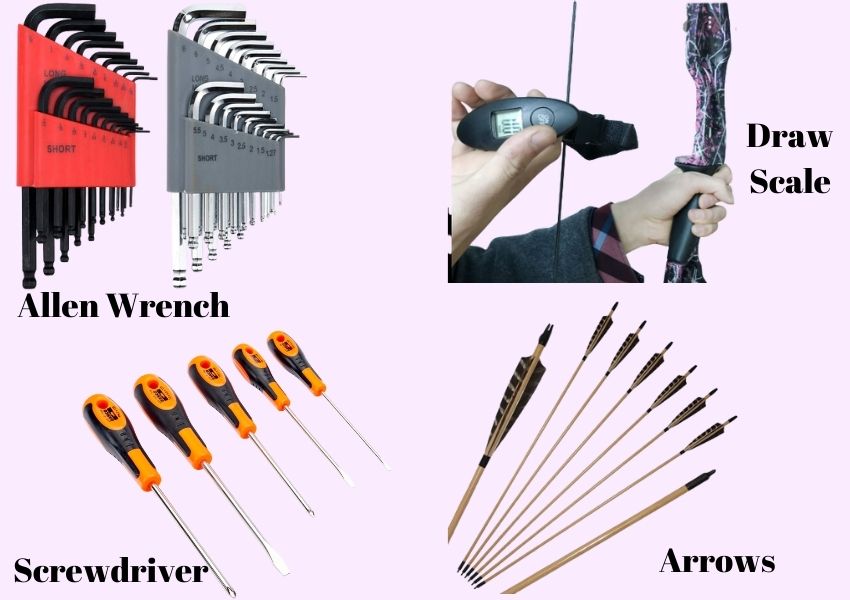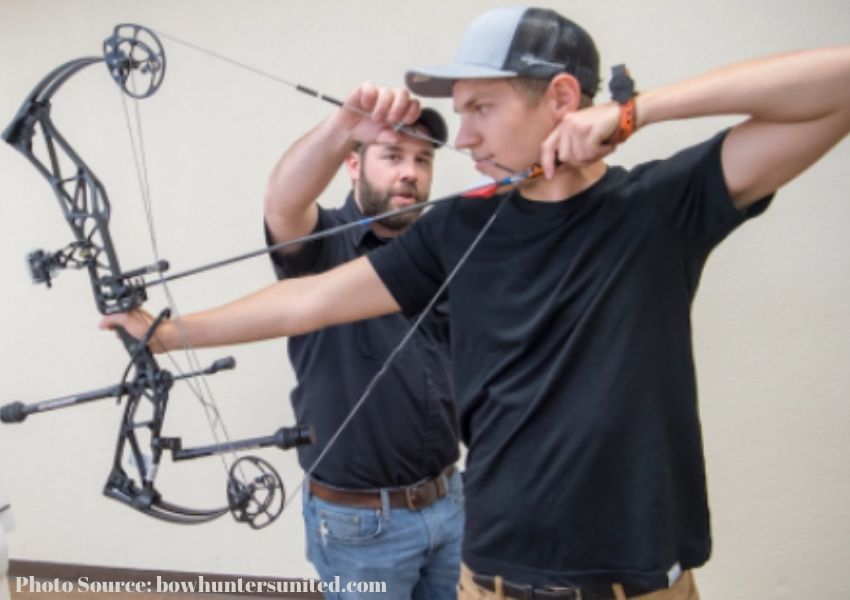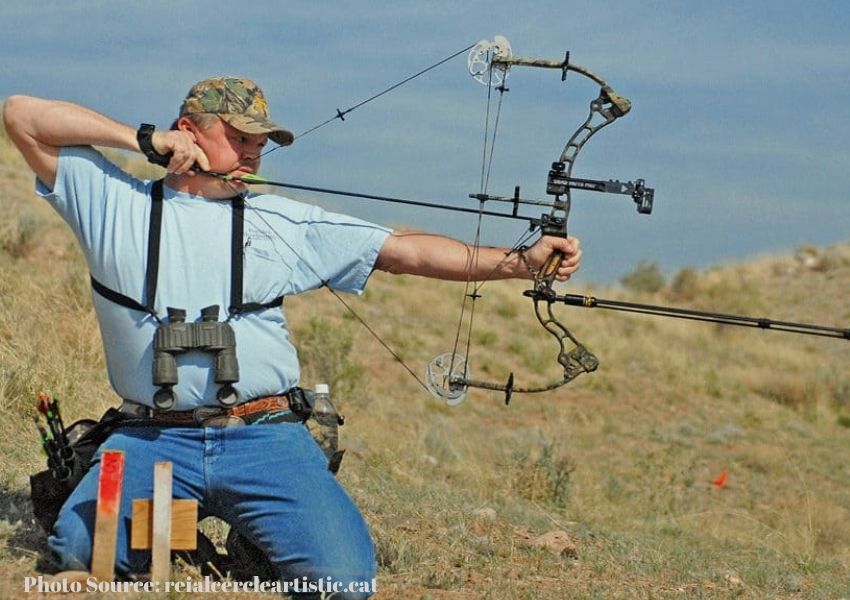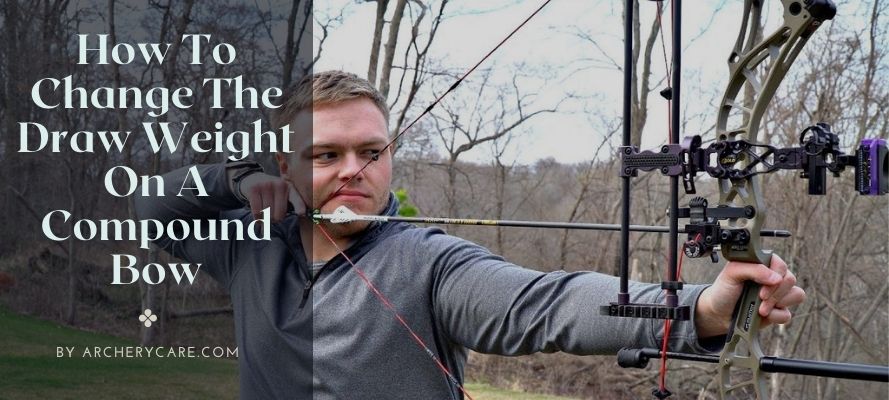Archery is almost as old as civilization. And its latest and most refined manifestation is a compound bow. As the name suggests, the compound bow is a rather technically sophisticated piece of equipment. But there are simple yet crucial aspects of it that even a beginner level archer can master. One such feature is changing the draw weight.
Adjusting the draw weight can make all the difference between a marvelously successful and hopelessly painful experience. So how to change the draw weight on a compound bow? Well, that’s exactly what we’re going to discuss here, in detail, because that’s where the devil is!
Table of Contents
What’s The Draw Weight of a Bow?
In simple terms, the draw weight is the force needed to pull a bow. As for the elaborate definition: the force that is needed to be exerted to pull the bowstring of a bow from the idle to the fully drawn position.
What Effects Does the Draw Weight Have on Archery?
Few modifiable aspects of the bow are as impactful as its draw weight. Getting a good grasp of these effects will allow you to take the right decision while changing the draw weight. Here we’ve discussed some of the most important effects.
Effort: The first and the most obvious impact of the draw weight is the difficulty or ease an archer faces while shooting. A higher draw weight results in a more difficult draw, the rearward pulling of the bowstring. On the other hand, a low draw weight makes the drawing process a much easier one.
Kinetic Energy: So we should go for a lower draw weight then? Nope. Not necessarily. A high draw weight does require a force of a bigger magnitude. But at the same token, the bowstring imparts a high amount of energy to the arrow.
Accuracy: A higher kinetic energy makes the bolt much faster. Thus it gets less impacted by the gravitational pull. Because the faster the arrow reaches its target the lesser time the gravity has to pull it down and make it more inaccurate. So the accuracy increases with the rise of the draw weight.
Range: The amount of kinetic energy the arrow receives is directly correlated to the draw weight. Evidently, this has a direct effect on the range of the arrow. A faster arrow has a much longer trajectory because it can cover a much longer distance with the same flight time. Higher energy also means a faster rotation of the fathers. This allows the arrow to keep a much straighter path, increasing the effective range.
Safety: A very high draw weight can put you in serious security hazards. If a bow is set at a much higher draw weight than the level that’s optimal for the archer, it can cause a severe muscle ache. It can even cause the bow to break. This may also lead to stumbling down and serious injuries.
Experience: So far, we've only discussed the physical impacts of weight draw. The archery experience is a purely psychological one. The effort you put to shoot an arrow, the range and accuracy it has, etc., will have a profound impact on the way you look at archery. Especially if you're a beginner.
Thus the draw weight has a lasting impact on the archer.
Preparation To Adjust or Change The Compound Bow Draw Weight
Collect These Tools
You'll need some gears to successfully adjust the draw weight on a compound bow. Nothing fancy, just an Allen wrench, a bow scale, and an arrow for testing the result.
Allen Wrench: You'll have to tighten or loosen the limb bolts. These bolts maintain the tension of the bowstring. It so happens that the overwhelming majority of the limb bolts are hexagonal. So the hex key also known as the Allen wrench is the tool of choice. If you have a single bow, a fixed wrench will do. We recommend you have an Alan wrench set in your arsenal for multiple bows.
Draw Scale: Before adjusting the draw weight, you’ll have to know the existing draw weight. You’ll also have to measure it once you’ve finished the changing process. Thus, you’ll need a draw scale to gauge the draw force. An old spring scale will do. But for more accuracy and ease of use, go for a digital draw scale.
Screwdriver: A screwdriver may be needed depending on the bow design. If it features additional screw sets to hold the limb bolts, you may need a screwdriver depending on the screw type.
Arrow: You should use the arrow to test the performance of the bow once you've optimized it. Don't use anything special; rather, it should be from a bolt type that you use regularly.

Find Out the Current Draw Weight
Don’t be in a rush to change the draw weight. Rather, you should first measure and record the existing draw weight for reference in the future. This will allow you to pinpoint the required weight. Then you’ll be able to use that particular weight for adjusting any other bow.
Hook up the D-loop of the bowstring to the scale. We recommend a digital scale because of its higher accuracy. Pull the bow to a full-draw position. Note and record the weight shown on the dial.
How To Increase Draw Weight On A Compound Bow
If you can pull the bowstring at its current draw weight with very little resistance, this means the bow can use some increment to its draw weight. This is because, ideally, you're supposed to have as heavy of a weight as you can without undermining the control. As explained before, this will allow you to shoot further with higher accuracy. So follow these steps.
Step One: Know the Maximum/Minimum Limb Weight Rating
Before you start increasing the draw weight, you should find out the minimum or maximum limb poundage of the compound bow. Usually, the poundage varies between a 10-pound range. Though this can vary.
Most compound bows of the latest models have a limb rating sticker. Look for it on the inside segment of the limb near the attached cam. If you can’t find any stickers, consult the manufacturer for the relevant information.
Step Two: Locate the Limb Bolts
You’ll find the limb bolts close to the center of the compound bow. They’re located in large circular knobs. These knobs attach the bow’s arms to the riser. The central part of the compound bow is called the riser. It connects the different mechanical components of the bow. To tweak the draw weight you’ll have to adjust the limb bolts.
Step Three: Loosen the Limb Locking Screws
Some models of compound bows feature an additional set of screws that secures the limb bolts once they’re optimized. If your bow is of this type, you’ll find them on both sides of the limb bolts. These may need screwdrivers to slacken them, or they may open with an Allan wrench.
Step Four: Tighten the Limb Bolts Till They’re Bottomed
Select an Allan wrench head from the wrench set that matches the limb bolts. Insert the head/arm of the wrench and secure it at a properly slotted position. Turn the wrench clockwise. This will cause the string to gain tension and increase the draw weight. Keep tightening the bolts till they bottom completely.
Make sure to do the same amount of tightening for both of the limb bolts. You cannot simply overstretch the importance of this simultaneous tightening. If you mistakenly don’t do it, the bow won’t be correctly tilled and it’ll lose its accuracy substantially. Keep track of the number of turning/full rotations you’ve given to the bolts. Write down the number of turns for reference.
Step Five: Back Off the Limb Bolts Till the Desired Draw Weight
Now start loosening both of the limb bolts simultaneously. Retain the consistency of turns. Let's say, you turn the top limb bolt two turns then do the same for the bottom limb bolt. Then go back to the upper bolt and so on. Keep doing this till you reach the desired draw weight. Once you’ve got to the correct weight, secure the limb locking screws.

How To Lower Draw Weight On A Compound Bow
Go through the first four steps of the previous section. You’ll have to tighten the limb bolts till they completely bottom. Now you should take some pressure off the limbs to decrease the draw weight.
Turn the bolts counterclockwise and this will reduce the poundage. Maintain the same number of turns for both the upper and lower limb bolts. They must stay tuned in order for the bow to shoot accurately.
Be really careful not to loosen the bolts more than the manufacturer’s recommendation. If you cross the limit, the limbs might come off. This may cause the cables and limbs to fly off.

The Wrap Up
To attain excellence in archery, an archer and his bow must be thoroughly fine-tuned. So much so that the archer should feel the bow to be an extension of his own body! This can only happen when the draw weight of the bow is optimized to meet the specific needs of the archer.
Now that you know how to change the draw weight on a compound bow, you’ll be able to adjust the weight all by yourself. A properly optimized bow coupled with a strong determination will take your archery to a whole new level.
Similar Guides for Compound Bow Users:

